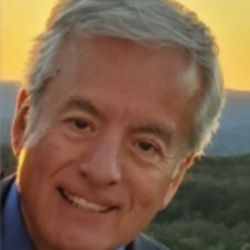The 102nd Annual AATS Meeting successfully came to a closure. The first face-to-face meeting in our specialty since 2019. Beyond the relief of seeing everyone again, in person, with masks optional, it is time to pen our personal take on what impressed us the most.
For the first time at one of our major specialty meetings an entire session was dedicated to the shortcomings and the efforts of our cardiovascular colleagues across the globe.
Professors Liesle Zhülke and Peter Zilla from South Africa reminded us of the ongoing burden of Rheumatic Heart Disease (RHD), which affects between 30–50 million people, mostly young and mostly poor, around the world. A disease about which we don’t even think about in high income countries anymore.
As the entire world stands at the threshold of an epic epidemiological transition where major causes of mortality are beginning to transition from infectious to chronic ones (COVID-19 not withstanding), we tend to forget that the most serious infectious disorder producing an extremely incapacitating ailment, affecting with disproportionate prevalence Low-and Middle-Income Countries particularly in Africa, Asia and Latin America is not HIV but RHD.
Despite chronic underfunding and a vaccine that always seems around the corner, new advances due to the recent pandemic may speed up the practice of prevention.
But prevention, while great for the upcoming generations of children, will not do much for the millions living with the already established valvular degeneration. The lack of cardiac surgeons and cardiac surgery centers in the neediest parts of the world, compounded with the cost of artificial valves and the logistics of anticoagulation intensifies the inequalities.
In discussing inequalities in surgical access, Dr. Hosain reviewed the differences in the number of surgeries per inhabitants between a high-income country (U.S.) where we have about 2,000 operations per million and compared it to the surgical volume for the South-Asian region (Bangladesh, India, Pakistan, Sri Lanka, Nepal, Maldives and Bhutan) where 250,000–300,000 total cardiac surgeries are performed per year while those countries combined equal six times the U.S. population.
These numbers are aggravated by the fact that despite having homegrown training programs in five of these countries, younger generations of physicians are choosing other specialties, leaving many of the training spots vacant. The uneven distribution of cardiac surgeons around the world is such, that over 100 countries have no registered specialist in the field.
A refreshing highlight was the presentation by Derran Bryan about female first and senior authorship in the two largest U.S. journals of the specialty (Annals of Thoracic Surgery and JTCVS). The results show that female first authorship has steadily climbed from around 8–15% over the last 10 years, while senior authorship has remained basically unchanged. Perhaps one of the most spontaneous interventions was the one by the invited discussants, Marc Moon, MD, who called-out the organizers for having a “manel” (an all-male Panel) moderating a topic such as the inclusion of women in Cardio-Thoracic Surgery.
Thirty years had to pass between Nina Braunwald, the first female thoracic surgeon, being accepted into the field and a female becoming chair of an academic department/division of cardiac surgery. Interestingly, that is about the same length of time that had to pass between the moment women were accepted into combat vessels in the U.S. Navy (1993) and a female entrusted with command of one of the 11 U.S. Navy carriers.
A couple of reflections: 30 years had to pass? Or is 30 years the expiration date for exclusive all-male organizations?
With females reaching over 53% of medical school enrollment and about 38% of general surgery positions, we can only hope it is just a matter of time until the qualification “female-surgeon” will finally be retired from our vocabulary.
In closing: a glimmer of hope. We were delighted to hear about the optimistic recount of the first pig to human heart transplant by our eloquent colleague Bart Griffith. As usual, an entertaining presentation describing genetic manipulation and clinical complexity with the simplicity of a storyteller, reminding us that even when everything seems puzzling and strenuous, hope is just around the corner.
Dr. Cardarelli is employed by Inova Children Hospital. He has no conflicts of interest to report.
Image by Inspiring / Shutterstock







